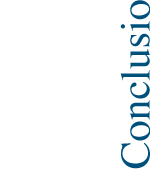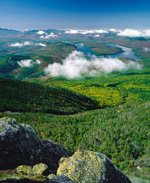- Concepts for a better world
- > Prudent and sustainable use of nature’s resources has yet to become a reality. Past approaches have failed because the concept of “sustainability” is so ill-defined. Moreover, sustainability can only be accomplished if the complex linkages within the natural world are valued more accurately. For the future it is therefore vital to improve our understanding of the diverse services of ecosystems and to put a comprehensive conception of sustainability into practice.

“Sustainability” – a difficult concept to define
For all its positive connotations, these days the concept of “sustainability” is so broadly conceived as to make it ill-defined and vacuous. Originally, “sustainability” meant something like: making only such use of natural, renewable resources that people can continue to rely on their yields in the long term. The concept was coined by Hans Carl von Carlowitz, chief mining official of the Principality of Saxony. Faced with massive deforestation caused by the demand for fuelwood for metal smelting, in 1713 he called for “continuously enduring and sustainable use” of the forest. But the concept only became a buzzword in the 1980s with the publication of the report by the World Commission on Environment and Development (WCED). In response to rising environmental degradation since the mid-1950s, the WCED defined several major sustainability goals which included reducing poverty, stimulating economic growth in developing countries and protecting the environment. However, the report lacked a clear model of how to achieve sustainability. To be sure, the “three pillars” model which envisions sustainability resting on the supports of the environment, economy and society was derived from the WCED report, but it also became apparent that these aspects are not treated as equal in status. Until now, economic interests have tended to be a higher priority than environmental protection. An important precondition for sustainable development is that what is actually deemed worthy of protection must be clearly defined. In this context experts make use of the concept of natural capital. This comprises all stocks of natural assets, for example the soil or the ocean, which give rise to natural products and services such as fresh air or drinking water. How strictly these natural assets are to be protected is a matter on which there are still divergences of opinion. For instance, experts differentiate between strong and weak sustainability. According to the model of weak sustainability, forms of natural capital that have been consumed can in principle be replaced without limit by real capital and human capital. According to the idea of strong sustainability, in turn, forms of natural capital can only be consumed if they can be replaced by equivalent natural capital. To determine the significance of different forms of natural capital more precisely, experts analyse which different types of ecosystem services they provide. These include aspects like the climate-regulating effect of the ocean, for example, as well as aspects that are not directly measurable like the beauty of a landscape. In many places natural capital is under threat or has already been destroyed by environmental degradation. However, the prevention of further damage or the restoration of previously damaged areas costs money. For that reason, various conservation measures are often weighed against each other in cost-benefit analyses. But while the costs can mostly be established easily, the benefits of many ecosystem services are quite difficult to quantify. In order to have some means of assessing the economic value of an ecosystem service nevertheless, experts have defined different value categories. Some of these arise from the use of natural capital and some from its mere existence. Hence natural capital also has an existence value, which arises from the sheer pleasure of knowing that certain creatures or habitats exist. As a basic principle, scientists advise prioritizing the protection of both critical natural capital and ecosystem services, which means all those which are existentially important for humans – such as scarce groundwater resources in arid zones.

